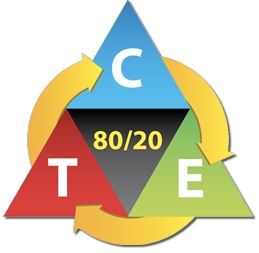Marketing
"Most businesses actually get zero distribution channels to work. Poor distribution — not product — is the number one cause of failure. If you can get even a single distribution channel to work, you have great business. If you try for several but don’t nail one, you’re finished. So it’s worth thinking really hard about finding the single best distribution channel." - Peter Thiel
Warning: marketing is not a panacea for crappy products or a solution to a problem that doesn't exist.
Marketing 101

source: The Tactical Triangle by Perry Marshall
To sell, you have to get Traffic → Convert it → profit (Economics). Re-invest the earnings to get more traffic forming a loop.
1. Traffic: Who are the buyers?
case studies: growing a website, first 10000 visitors, 0-10k, 100,000 Visitors in 1 Year
Traction: A Startup Guide to Getting Customers by Gabriel Weinberg and implement The Bullseye Framework for Getting Traction
2. Economics: Can we reach them affordably?
Unit Economics by Sam Altman
3. Conversion: How can we persuade them to buy?
The Customer Factory model

source: The Science of How Customers Buy Anything by Ash Maurya
"The first battle isn’t fought on the ground but in the mind of the customer. It isn’t fought with your built out solution but instead with an offer." - Ash Maurya
Every offer consists of 3 elements:
Unique Value Proposition that grabs customer’s attention.
Demo which takes them from current reality to desired reality.
Price that locks in commitment.
"The aim of marketing is to know and understand the customer so well the product or service fits him and sells itself." - Peter Drucker
The offer must turn unaware visitors into interested prospects.
Be aware of a this journey that happens inside your customer’s mind:

You have to take a potential customer from Point A (curent reality without your product) to Point B ( new reality where they need and use your product): Reach (USP) → Engage (demonstrate) → Convert.
Even with everything done right you are still facing:
friction (anxiety/uncertainty of embracing something new): the "I don't need this" voice.
inertia (switching cost): the "It's too much effort" voice.
You must make the transition to your product as seamless as possible.
After the sale you have nurture your relationship with the client (onboarding, showing how your product makes them awesome)
Notes
Tips on content marketing:
People focus on the content and forget the marketing part. 50/50 Rule: spend 50% of the time writing the content and the other 50% promoting it. Eric Siu goes further: 20% Creation and 80% Promotion. Neil Patel on promoting blog posts and on how much should you write.
A question for creating interesting content: how would X look like through the lens of Y? Example: If Football and Golf Commentators switched places.
Document Don't Create by Gary Vaynerchuk: "Documenting your journey versus creating an image of yourself."
Links
Quant Based Marketing by Noah Kagan
1,000 True Fans by Kevin Kelly
Selling Software To Large Businesses by Patrick McKenzie
Last updated